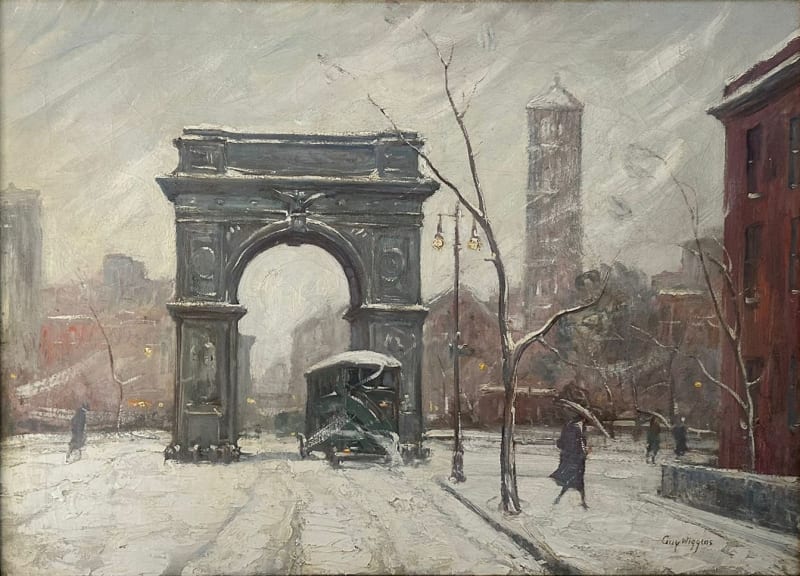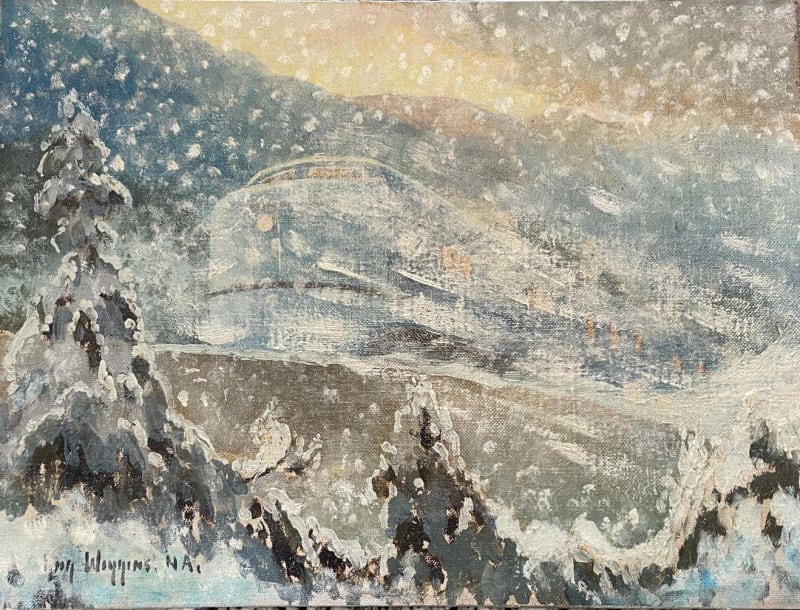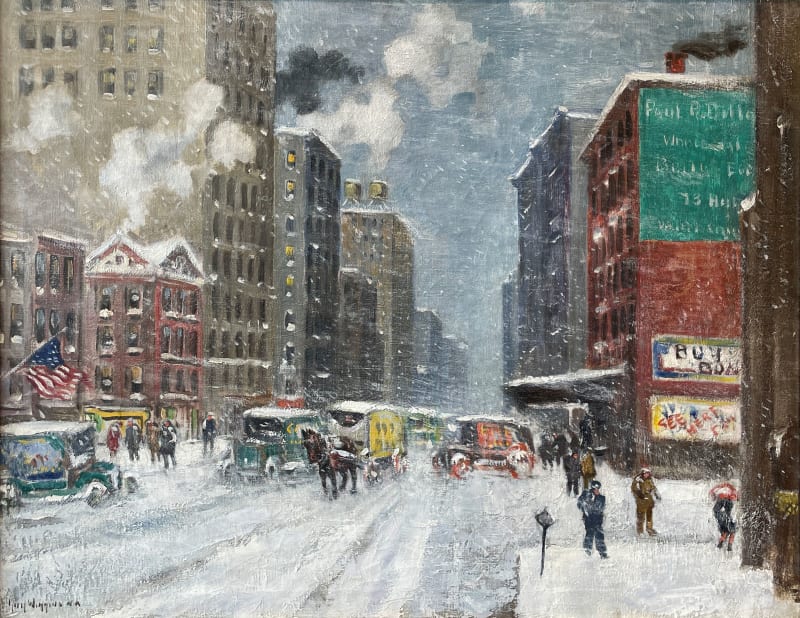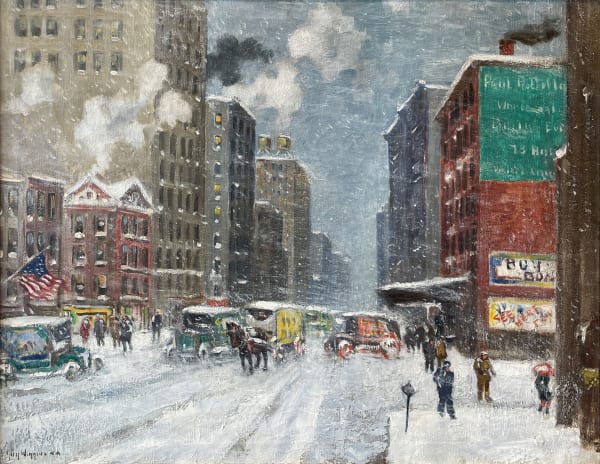Guy Carleton Wiggins is best known for his impressionistic snow scenes of New York in 1920's. Wiggins lived in Old Lyme and Essex where he operated an art school. The Connecticut country-side was conducive to his impressionist technique of plein-air painting and broken brushwork.
Ironically, although his work includes many fine Connecticut landscapes, he is best remembered for some snow scenes of New York City. Like many other American Impressionists, Wiggins had one foot in the city and the other in the country (Vermont Hillside, South Londonderry).
Wiggins was born in Brooklyn, New York, went to England with his family as a boy, received an English grammar school education, and traveled widely abroad. He was the son of a prominent artist, Carleton Wiggins, a painter in the Barbizon style who studied with George Inness and admired Anton Mauve and Dwight Tryon. The father and his family had been early and regular visitors to the Old Lyme Colony, and the elder artist had settled in Lyme permanently by 1915, where he was active in the Lyme Art Association and in the social life of the colony.
The son, by contrast, became strongly attracted to Impressionism and stayed with it long after it was considered outmoded. Eventually in 1920, he and his family also settled in Lyme. Some twenty years later he relocated in Essex.
His art talent had manifested itself early and stunningly. He had been only eight years old when New York critics publicly praised some watercolors done in France and Holland. Soon his interest in art exceeded that in architecture, and he studied at the National Academy of Design, first under William Merritt Chase and later under Robert Henri. Wiggins quickly won recognition. By the time he was twenty he had a work in the permanent collection of the Metropolitan Museum of Art. He was elected to full membership in the National Academy of Design in 1919. Awards came steadily, such as the prestigious Norman Wait Harris Bronze Medal from the Art Institute of Chicago in 1917.
Wiggins was especially busy in the years before World War I, working on commissions from New York patrons for scenes painted "on location (Morning, Gloucester) " in England, but he found time to be at Old Lyme and exhibit there, and he became involved as well with the Connecticut Academy of Fine Arts, established in 1910.
By 1920 Wiggins had decided to make his home on an old farm in Hamburg Cove, a picturesque area in Lyme Township. He still spent time in New York, and most of his New York snow scenes probably date from the early 1920s.
Although he spoke of the New York pictures as though they were history, he sometimes again felt the urge "to brush up a little snow" in order to pile up a little cash. Indeed, he may have changed his attitude completely, for he also once told someone that New York during a snowfall was his favorite subject.
But since Connecticut landscapes and New York snow scenes are about equal in number in his work, and comprise most of it, the pastoral quality in parts of our state clearly appealed to Wiggins. Some say the New England landscapes are his best work.
In 1930 Wiggins, though he still listed a winter New York address in the American Art Annual, was advertising the "Guy Wiggins Art School: New Haven (winter); Lyme (summer)." Hartford artist James Goodwin McManus often taught the summer classes with him at Hamburg Cove. In 1937, at the age of fifty-four, Wiggins resettled in Essex and moved his art school there year-around. He invited for his students' benefit such guests as George Luks, Bruce Crane, Eugene Higgins and John Noble. He formed the Essex Painters Society.
In Essex he is reputed to have lived with his second wife in a "beach wagon." He died while on vacation in St. Augustine, Florida, in 1962 and is buried in Old Lyme. People who knew him still talk about him as "the ebullient Wiggins." His artistic reputation surpasses both that of his father and of his son.











